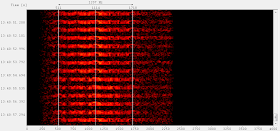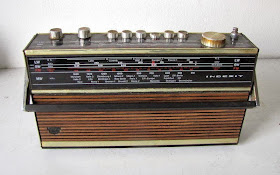FSK 200Bd/500 mode is believed to be used by one of the Russian intelligence services. It transmits data using FSK (Frequency Shift Keying) modulation with the ITA-2 alphabet (with 1.5 stop bits) at a speed of 200 baud with a shift of 500 Hz.
FSK 200/500 messages are transmitted with fixed schedules on frequencies which change monthly. The latest information on the times and frequencies of these schedules can be found online here.
Rivet can decode FSK 200/500 messages directly from a radio in USB mode connected to a soundcard line input or from a WAV file that is mono and with a sample rate of 8000 Hz. The program calibrates itself by looking at the incoming audio and then starts to decode and display the message on the screen. Once a message is decoding do not retune your radio until the message is complete.
FSK 200/500 messages are transmitted with fixed schedules on frequencies which change monthly. The latest information on the times and frequencies of these schedules can be found online here.
Rivet can decode FSK 200/500 messages directly from a radio in USB mode connected to a soundcard line input or from a WAV file that is mono and with a sample rate of 8000 Hz. The program calibrates itself by looking at the incoming audio and then starts to decode and display the message on the screen. Once a message is decoding do not retune your radio until the message is complete.
A short recording of a an FSK/200/500 transmission may heard here
When there is no message to send in a schedule the line
00000++++++++++162)5761
will be sent continuously for seven minutes as in the following decode output from Rivet:
When there is a message offline encryption is sent which starts like this:
00000++++++++++188=8331
52281013891141343 =8432
92874574809254333 =8573
814347960943078155=8794
52281013891141343 =8432
92874574809254333 =8573
814347960943078155=8794
The number to the left of the = sign appears to be the encrypted traffic and consists of 17 or 18 digits. The number to the right is interesting also though. The last digits of this is the line number which you can see incrementing. The messages ends like this:
28870268039372698 =81275
423345851935701126=86276
88837514787689596 =81277
26158186121423068 )57678
28870268039372698 =81275
423345851935701126=86276
88837514787689596 =81277
26158186121423068 )57678
Certain 3 digit codes appear to have special meanings. The ones we have come across so far are:
162 Start of a null message
188 Start of a message
576 End of message or null
162 Start of a null message
188 Start of a message
576 End of message or null
(source: Rivet wiki)







